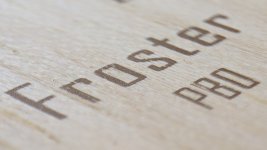This user has no status.
This user has no status.
Member
Finally finished a complete video instructional guide for how to cut, glue, and assemble a table tennis bat from scratch. Recognise there are other really experienced people here who are also great at setting up bats - this was my method.
Background: A film student approached me to ask if I'd volunteer to be a subject in an assignment to make a sports documentary. I consented and also took the opportunity to video an instructional guide on how to assemble a table tennis bat - I've been setting up bats since 2018.
While I'm looking forward to seeing the final result of that documentary project, I've whipped up a simple edit of the guide.
I've been wanting to do it for over a year now so I was glad for the opportunity to share some knowledge and experience.
Hope this video helps someone!
Background: A film student approached me to ask if I'd volunteer to be a subject in an assignment to make a sports documentary. I consented and also took the opportunity to video an instructional guide on how to assemble a table tennis bat - I've been setting up bats since 2018.
While I'm looking forward to seeing the final result of that documentary project, I've whipped up a simple edit of the guide.
I've been wanting to do it for over a year now so I was glad for the opportunity to share some knowledge and experience.
Hope this video helps someone!











